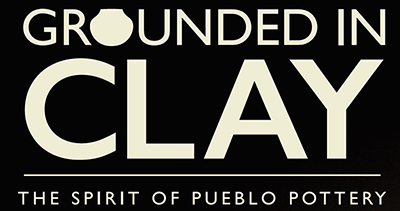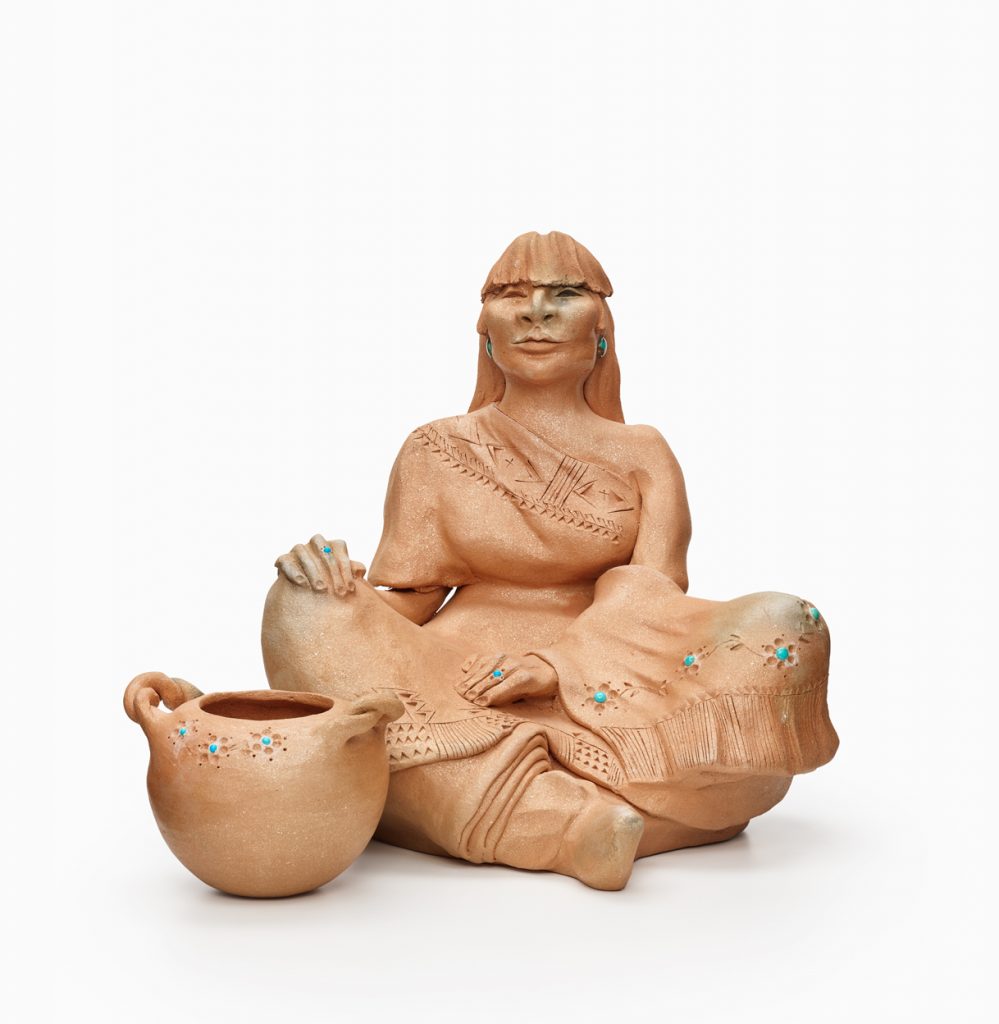Dr. Christina Castro
Taos Pueblo, Jemez Pueblo, Chicana
Curator Dr. Christina M. Castro (Taos Pueblo, Jemez Pueblo, Chicana) was born in Southern California to a family who participated in the federal Indian Relocation program. She currently resides in O’gah’poh geh Owingeh (Santa Fe), New Mexico. She is a mother, writer, farmer, scholar, educator, community organizer, multidimensional artist, public speaker, and more. In 2017 Dr. Castro cofounded Three Sisters Collective (3SC), an Indigenous women centered grassroots organization devoted to art, activism, education, and community-building. She is also an independent consultant with Castro Consulting.
Categories:
Tribal Affiliations:
Artwork Affiliations:
Christina chose the following for the Grounded in Clay exhibit:
The World is Her Vessel
Jeralyn Lucero is a member of my extended family. Her parents, along with my grandparents, were relocation participants who were moved to Los Angeles from Taos Pueblo in the 1950s.¹ Our two families spent a lot of time together when she was young. When she was thirteen, Jeralyn’s family moved back to Taos Pueblo, while my family continued to live in Los Angeles. She later married a traditional man from Taos Pueblo and had three children, who are now young adults. She is an amazing artist who uses several media to create beautiful artworks that she sells in her shop on the southern side of the Pueblo. Her micaceous clay work is unique and mostly female forms: Taos Pueblo women with full bodies and expressive faces, often sitting or lounging self assuredly as if to say, notice me, take in my beauty.
This piece embodies the spirit of Taos Pueblo women—striking, traditional, grounded, outspoken, and a tad irreverent. I was saddened to see it sitting in a collection because I felt that this woman, like Jeralyn’s energetic and industrious spirit, wants to escape the confines of an institution. She is restless and wants to see and do things, to bear witness to all that is happening in her village and the world! The figure reminds me of Jeralyn herself, someone very devoted to her family, traditional life, and successful shop in Taos Pueblo, but if you get her talking, she will regale you with stories of growing up in LA and of how much she loved city life and its adventures.
The detail in this piece, from the designs on the dress to the turquoise accents, brings to mind the meticulousness of Taos women when it comes to the details in their traditional dress and adornments. They like to dress to the nines for ceremony, and their confident attitude demonstrates how much pride they have in where they come from. It is as if they know what they have and are not afraid to show it. Being a Taos woman certainly gives me a healthy dose of confidence, and I see that same sentiment in this woman. Something tells me she and her pot will relish the opportunity to be appreciated by a larger audience and to experience time away from the collection.
¹The Indian Relocation Act of 1956 (Public Law 959) encouraged Native Americans to leave their traditional lands and reservations, and to assimilate into the general population by moving to and working in such urban areas as Los Angeles, San Francisco, and Minneapolis.

